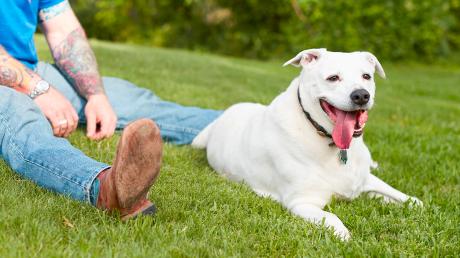Comparison of the effects of four diets on urinary parameters in dogs and in vitro struvite dissolution

Introduction
Urolithiasis is a common disorder of the urinary tract in dogs1. The predominant canine uroliths are calcium oxalate and magnesium ammonium phosphate (struvite). Dietary dissolution is safe and effective for eradication of sterile struvite uroliths in dogs. Richness in moisture and/or sodium and/or protein, in order to increase water intake and thus increase diuresis, urinary flow and frequency of micturition, may vary between commercial diets. Beyond urinary pH, recent findings showed that it is possible to formulate a diet to reduce either one or both struvite and Ca oxalate risk, taking into account the struvite and Ca oxalate relative supersaturation (RSS) in the urine2,3.
Animals, materials and methods
Twelve healthy adult beagle dogs normally fed dry diets were included in this study using a cross-over design with 4 dry diets*, each being fed for 14 days. Diets A and B were 2 new
high-protein diets: A was a maintenance diet for adult dogs, B was a dietetic food dedicated to dissolution and prevention of struvites (Table 1). Diets C and D were 2 commercial
urology diets used as positive references. Dogs were fed to maintain their body weight. Each period was divided into an adaptation phase of 12 days, and a collection phase of 2
days were dogs were housed in individual metabolism cages.
Water intake, urine volume and urinary pH were documented. Eleven urine electrolytes were analyzed to calculate struvite RSS and oxalate RSS indexes. The in vitro dissolution trial was performed with collected urine: 0.5 g of struvite stone (magnesium ammonium phosphate hexahydrate 98%; VWR, Darmstadt, Germany) was mixed with 10 mL of the filtered urine. Per dog and diet, 2 of these samples were prepared and incubated in a 38°C warm and rotating (80/min) water bath for 120 hours. After the incubation, samples were filtered to calculate the residues of the struvite stone.

*A: Virbac VETERINARY HPM Adult dog L&M, B: Virbac VETERINARY HPM Urology dog, C: Royal Canin Veterinary Exclusive Canine Urinary S/O, D: Hill’s
Prescription Diet Canine c/d Multicare
Results
There was no difference in mean water intake between the diets (Table 2). The mean urine volume of dogs fed diet C was higher compared to the 3 other diets. The urine production was also higher in dogs fed diet B compared to diet D. The mean urinary pH varied from 5.52±0.4 to 6.58±0.6, it was significantly lower with diet C. The struvite RSS index was <1 (undersaturation) with all diets. The oxalate RSS index was within the range of metastable supersaturation (1<RSS<12) with all diets. The lowest values were calculated for diet C and the highest values for diet D. During the in vitro dissolution trial, the solubility of struvite stone was higher in dogs fed diet C compared to the other diets.

a,b,c different superscripts within a row indicate significant difference (p<0.05)
Conclusions
Considering the results of the in vivo and in vitro trials, the new dietetic high-protein diet (B) was as efficient as the commercial urology diets C and D, and therefore could be recommended for both dissolution of struvite uroliths and prevention of calcium oxalate uroliths formation in dogs. The study also showed that the maintenance high-protein diet (A) provided a high urinary safety. The next step will consist in testing diet B in dogs with naturally occurring struvite urolithiasis.
References:
1) Osborne CA et al. Small Anim Clin Nutr 2010:813-923. 2) Robertson WG et al. J Nutr 2002;132:1637S-1641S. 3) Sagols E et al. WSAVA
Congress, Thailand, 15-18 May 2015.

